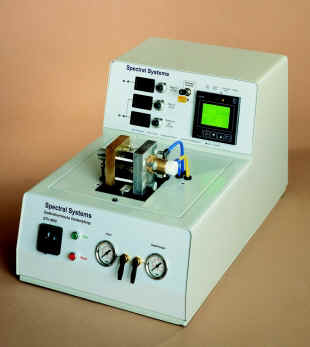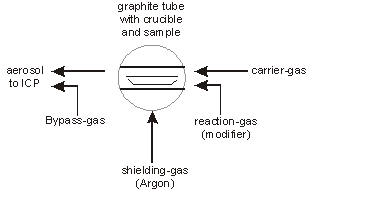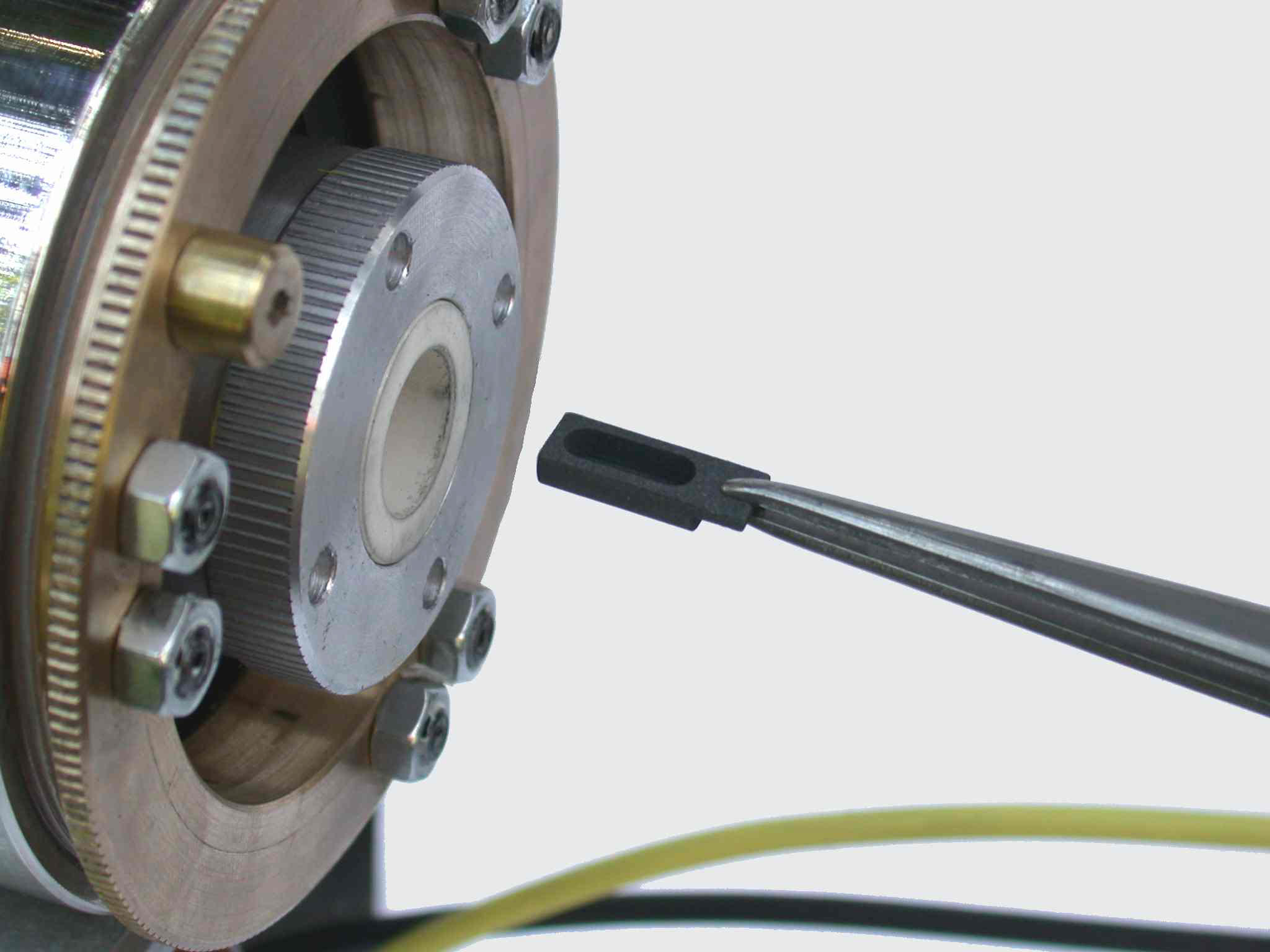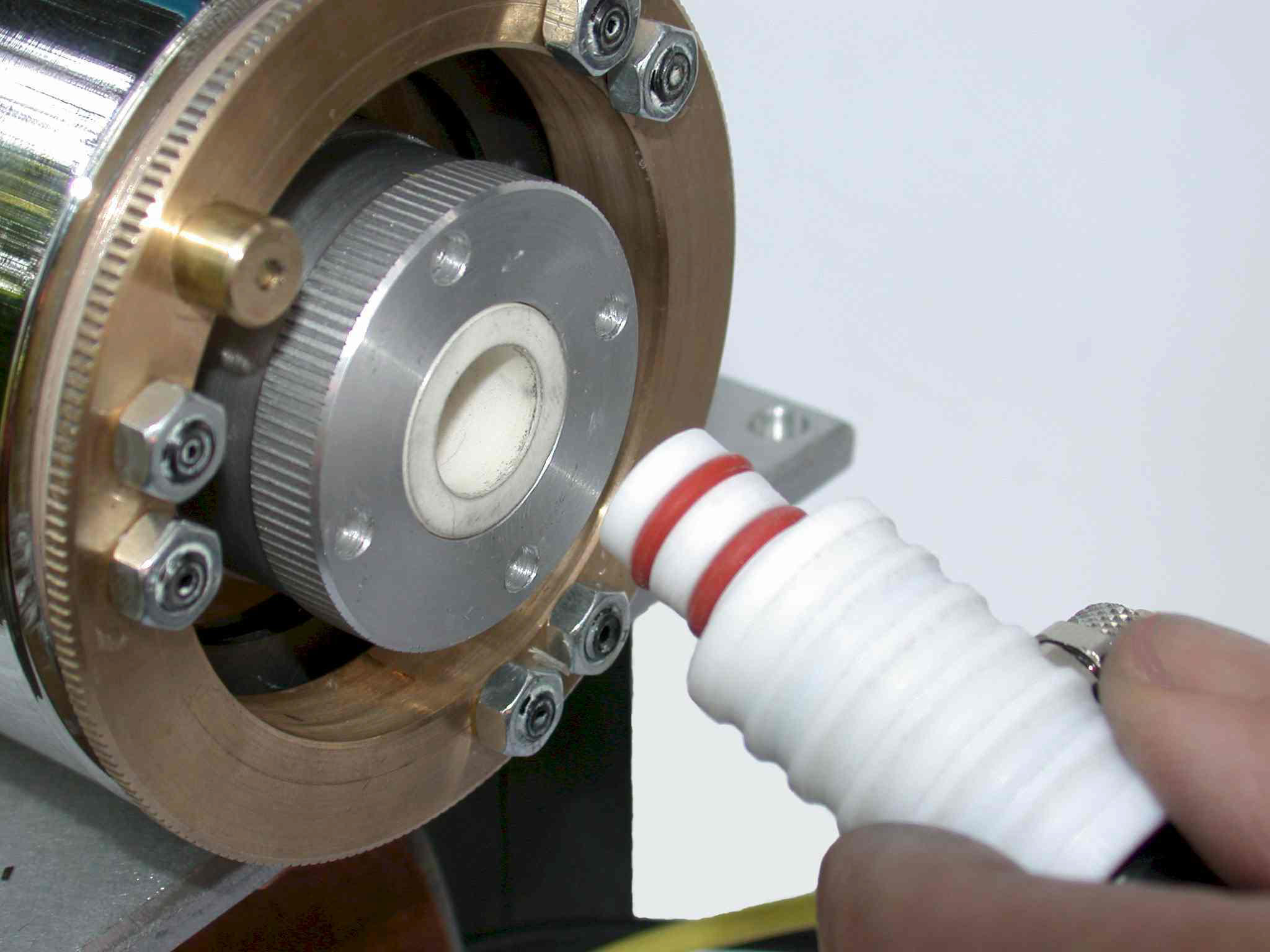
|
|
|
|
|

Electrothermal Vaporisator ETV 4000

- Direct solid sample analysis with ICP
- For ceramic, biological, mineralogical samples and many others
- Timesaving because no liquid digestion necessary
- Sample-weight: 1-5 mg
- Evaporation in graphite boat
- Transport of the aerosole to the ICP-torch via flexible tube
- Integration of the transient signals
- Limits of detection: < 0,05ng
- Multi-element-analysis with polychromators
Procedure:
The analysis of solid samples by electrothermal vaporisation is an excellent completion to the element detection in digested samples by liquid analysis.
The method has great advantages especially when the digestion of samples is difficult, for example with geological and ceramic samples, environment samples like sediments, muds, sludges, dust particles, but also biological samples like plants or human tissues. Also metallic samples can be analyzed easy and quickly by a electrothermal vaporisator ETV 4000.
The main characteristics of ETV 4000 are:
Application example: trace analysis in SiC-powder (ceramic material):
Analysis-time: 150 to 200 sec, inclusive changing of sample. Weight: 3mg
LOD´s (in the solid material!): up to <0,1ng, RSD: 2-10% (with suited homogenity)
Principle of Operation
About 1 – 5 mg of the sample are weighed into a graphite crucible and heated program controlled in a graphite-tube furnace with a new nozzle-type gas-guide (patent pending). By continuous addition of halogens from a reaction-gas the metal ions are being transformed into volatile metal halogenides. By this memories and losses of vaporised material by condensing at the cooler walls are avoided as well as the formation of carbides, in contrary to some former similar systems where carbide-formation is a very limiting factor.
The mixture of carrier-gas (Argon) and very small amounts of reaction-gas is being led over the sample and transports the evaporating material away.

At the end of the graphite tube an additional Argon-stream (bypass-gas) is being added in a patented way. In this most important area of some millimeters length only the transformation of the halogenised vapour into a dry and saturated aerosol is being performed. At the same time the cooler walls outside the heated graphite tube are being protected by the bypass gas against condensation-effects - that otherwise would create disturbing memory effects. This kind of gas treatment achieves extremely high transport efficiencies for the rest of the transport way towards the ICP-plasma. The sample vapour is being led directly into the plasma by a PTFE- or ceramic-tube.
The furnace is powered by a computer-controlled switched-mode power supply that can be operated in arbitrary temperature-programs. So the precise and reproducible adjustment of different temperatures, temperature ramps and holding times allows at least partly a fractionated vaporization of the sample. The steps drying, ashing, vaporization of components at different temperatures, vaporization of the matrix and cleaning of the crucible are divided from each other and pass the same process one after the other. Thus some spectral interferences can be overcome and even species analysis can be done to a certain degree. The temperatures range from room temperature up to about 3000° C.
The temperature of the boat itself (!) with the evaporating sample in it is permanently being measured by a fast and precise built-in online-pyrometer. An optimised control-circuit allows reproducible temperatures and best fit of the individually programmed temperature-curves, with best precision and without any thermal influence of the gas-flows or aging effects of the graphite-tube. The real temperature is being displayed in digital and graphical way at the LCD-dotmatrix-display.
In the ICP-plasma the atomisation and excitation takes place. That means that vaporisation and atomisation of the sample are separated from each other and can be optimised individually. This is a basic difference for example to AAS.
In the spectrometer the peak area of the signal has to be integrated over the time - not the peak high! It is much important that the spectrometer provides a software to enable this kind of data evaluation.
Calibration normally takes place by suited solid standards. But also a calibration by dried liquid single- or multi-element- standards is possible. In absence of solid standards a good method is also standard-addition to a carrier similar to the samples matrix.
Technical description
The compact desktop-instrument contains the easy-to-handle graphite furnace, a solid state power supply with up to 400 Amps, a program controller with graphic LCD-display, the pyrometer-microcontroller and the complete gas-flow-controller and mixer.
In the basic version the boats are loaded manually with tweezers. Also the door of the furnace, containing the pyrometer-sensor, is opened and close manually:


In the autosampler version the loading of the samples and the operation of the door is done automatically.
The program controller comes equipped with two sample programs and a test program. They can be easily modified without software-knowledge by three push buttons for the sample-specific parameters (temperature-time-program). Arbitrary temperature and time steps ( with one second as smallest step) in nearly unlimited number can be saved. The number of programs to save is only limited by the capacity of the memory and enough for each purpose.


Controller KS98
While operating the system the actual temperature, the program number and the program step or the actual temperature-time curve can be shown in the graphical display. The flows of the reaction- and transport gases controlled by mass-flow-controllers are continuously shown in three additional LCD-displays.
As gas argon is necessary (<1 L/min) and in small amounts (about 1%) a halogen-containing reaction-gas (Cl,F, for example Freon R12 (CCl2F2) or Freon R22 (CHClF
2 )). The use of these holocarbons, especially for laboratory purpose, is regulated in the EC by the regulation EU 2037/2000.The instrument is water-cooled (tap water or closed cooling system).
Power supply: three-phase current, 16A/400V, other voltages on request.
A connector for the electrical shake-hand-signals for the synchronization of the analysis with the spectrometer is included. This synchronisation makes the spectrometer start the data acquisition in the same moment when the heating program of the furnace is started (essential for the autosampler operation)
Weight and dimensions
350x600x315 mm, weight about 30 kg
Part numbers
| description | part no. |
|---|---|
| ETV-4000 basic unit | E40-1-000 |
|
|
|